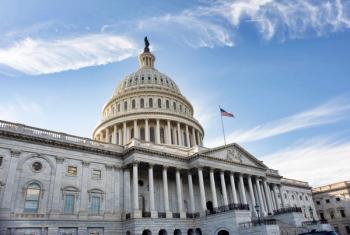
Health Insurance Exchange Confusion Hinders Patient Sign Ups
Any way you look at it, the hope that individuals will actually buy into the private purchase of health plans seems largely misplaced.
HHS Secretary Kathleen Sebelius testified before the House Ways and Means Committee on March 12 that there will be no more tweaking in the of the individual mandates under the Affordable Care Act (ACA). This after the White House announced the extension of exemptions on the basis of hardship.
A
Sebelius also refused to say whether the White House goal of signing up 7 million people will be met by the March 31 deadline, when open enrollment ends. Thus, the deadline for open enrollment will not be extended, according to Sebelius, despite lack of any clear data on the number of people who have both signed up and actually paid their premium. Individuals without coverage by the deadline will face a penalty at tax time, which will likely be deducted from any anticipated tax refund next year.
Any way you look at it, the hope of the White House that individuals will actually buy into the private purchase of health plans seems largely misplaced. A great deal of the problem lies in the confusing array of plans that can be purchased through the exchanges.
First, a purchaser must figure out what is being offered. Often termed “metal” plans: bronze, silver, gold and platinum, one would seemingly need to possess an advanced college degree simply to understand the choices. The lower-premium plans, are the “bronze" plans, which carry higher initial copayment responsibilities.
This may at first seem attractive to a lower wage earner. However, such a plan would actually benefit a higher-income individual, who could afford the 40 percent copayment. The platinum plan, which costs more in premiums but carries a 10 percent initial copayment, would seem to be better suited to a person who lacks resources to pay nearly half of his initial healthcare expense from his own savings. Recognizing the problem faced by lower wage earners, there are three alternative silver plans for lower income earners, which the website Obamacare 411
“These three alternative health insurance plan options are only available for people that have the lower incomes. The three health insurance plans have lower out-of-pocket expenses for people that are enrolled in the health insurance plan. Basically, what this all means is that even though you are buying a silver tier plan; you are actually being given a better health insurance plan.
• 100 percent to150 percent of the federal poverty level (FPL) = 94 percent AV, better than average platinum plan
• 150 percent to 200 percent of FPL = 87 percent AV, better than average gold plan
• 200 percent to 250 percent of FPL = 73 percent AV, better than average silver plan
If you have difficulty following this, you see my point. One thing people do universally seem to understand: “What is this going to cost me?” The answer should open more than a few eyes: All plans cap out of pocket expenses at about $6,350 for an individual, and $12,700 for a family in 2014.
This means for an individual in good health, who must pay for coverage without a subsidy, the annual out of pocket expense could be well over $14,000, even with the least expensive plan.
The next question on a consumer’s mind will likely be: “What happens if I just give up and hope I don’t get sick?” Naturally, without insurance the same individual would be liable for the entire cost of any unexpected care. But Americans have proven more than willing to accept this risk. If a person does not choose to comply with the individual mandate before the March 31 deadline, he will face a tax bill of between $95 and $285, if I understand the rules and exemptions correctly.
Finally, the largest problem facing the White House is the Republican message: “Vote against Democrats, and this all goes away.” It doesn’t, but explaining that, would be complicated.
Newsletter
Optimize your practice with the Physicians Practice newsletter, offering management pearls, leadership tips, and business strategies tailored for practice administrators and physicians of any specialty.










